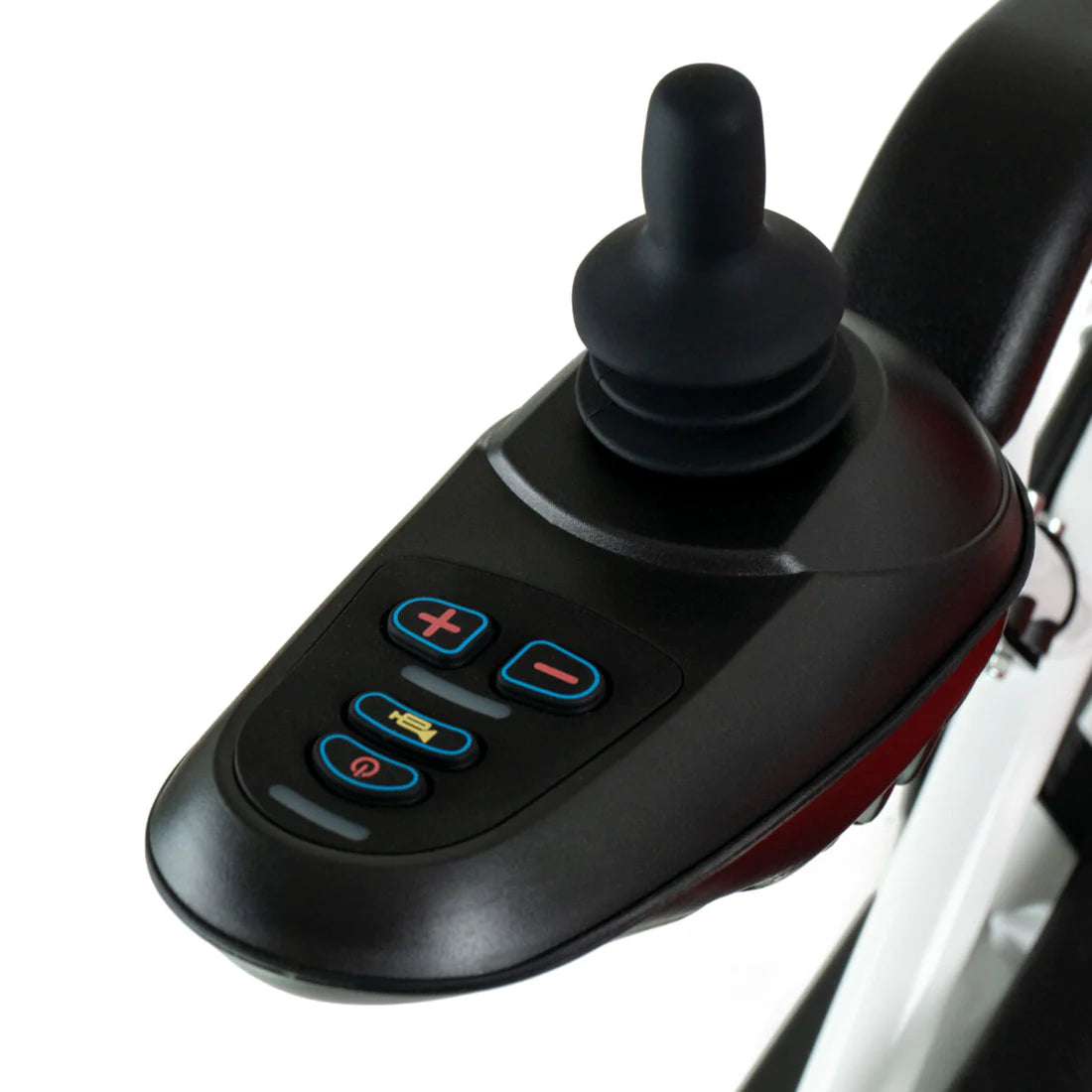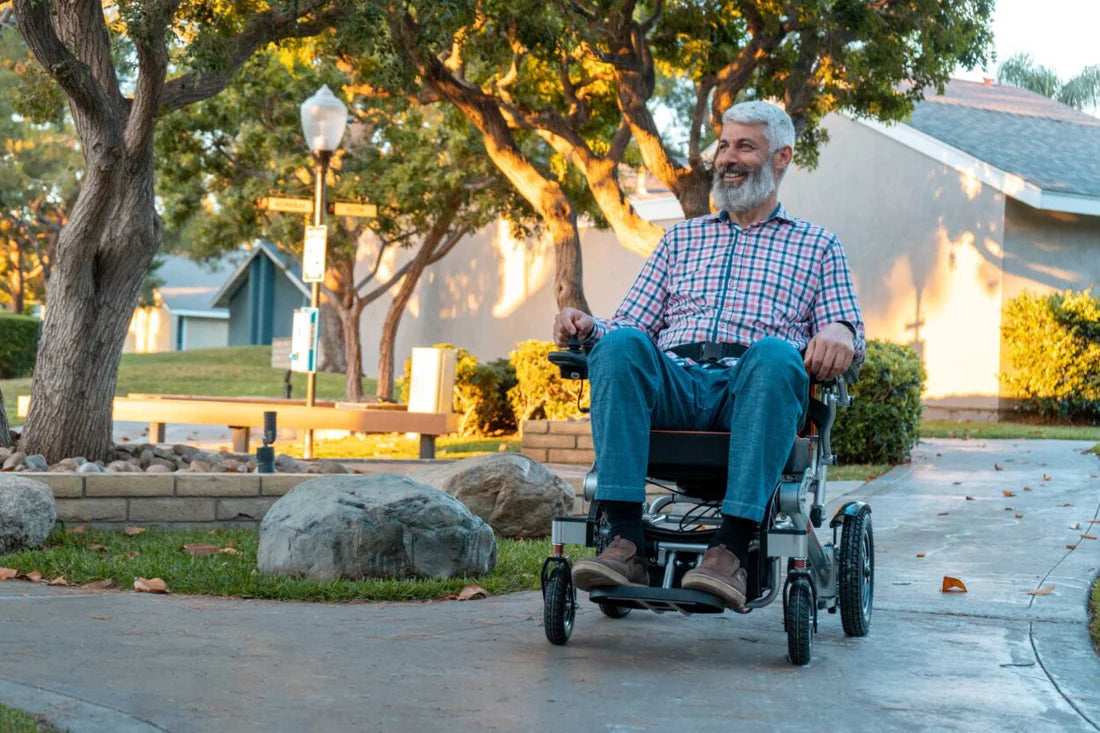Electric wheelchairs are a popular mobility device for persons with impairments since they allow them to move around freely. The weight of an electric wheelchair is one of the most significant elements to consider when choosing one. An electric wheelchair's weight can impact portability, convenience, and performance. This article will focus on the weight of electric wheelchairs and how it affects their use.
Electric wheelchairs are gadgets that allow people with disabilities to move about freely. The weight of an electric wheelchair is a significant consideration when choosing an appropriate model because it can impact the device's overall portability and stability.
An electric wheelchair's weight comprises the frame, motor, batteries, wheels, and other components. Electric wheelchairs typically weigh between 50 and 200 pounds, depending on the size and functionality of the equipment.
What factors influence the weight of an electric wheelchair?
Electric wheelchairs are available in various sizes and designs, with weights depending on their features and specifications. An electric wheelchair generally weighs between 50 and 300 pounds.
Frame Material:
The frame material significantly impacts the weight of an electric wheelchair. Electric wheelchairs are made of three primary materials: aluminum, steel, and titanium.
Aluminium is a lightweight material often utilized in electric wheelchairs. It is a robust, sturdy, and lightweight material that is excellent for building the frame of an electric wheelchair. Aluminum frames are often less bulky and easy to maneuver, making them ideal for persons who must transfer their wheelchairs regularly.
Steel is another material utilized to make electric wheelchair frames. It is durable and long-lasting, although it is heavier than aluminum. Steel frames can handle more weight and strain, making them an excellent alternative for users who want a more durable wheelchair.
The most costly and lightest of the three materials is titanium. It is more durable than aluminum and steel and is the best choice for wheelchair users. However, titanium frames are pricey, and not all users require such a high-end material.
Battery Type:
The type of battery used in an electric wheelchair can also affect its weight. Lead-acid batteries are typically heavier than lithium-ion batteries, which are more compact and lightweight.
Lead-acid batteries are usually heavier than lithium-ion batteries, weighing between 20 and 60 pounds. These batteries are also larger and require more upkeep. Lead-acid batteries, on the other hand, are typically less costly than lithium-ion batteries.
Lithium-ion batteries are smaller and lighter, weighing between 5 and 25 pounds. They also last longer and require less care. They are, however, often more costly than lead-acid batteries.
Motor Power:
The weight of an electric wheelchair is directly proportional to its motor power. Higher motor power often equals a heavier wheelchair. Because a more powerful motor necessitates larger batteries and powerful components to manage the higher load, the whole product is heavier.
However, other elements, such as the mat`1Qerial used for the frame and the kind of tyres, can also impact the weight of an electric wheelchair. Aluminum and carbon fiber are lightweight materials that may be utilized to reduce total weight, although solid or foam-filled tyres may weigh more than air-filled tyres.
Accessories:
Accessories such as armrests, footrests, and other add-ons can increase the weight of an electric wheelchair.
When selecting an electric wheelchair, it is critical to consider the weight of the attachments, especially if the user will be transporting the chair regularly. To reduce the increased weight, lightweight accessories made of sturdy materials might be a suitable solution.
Impact of their weight on performance:
Portability:
Portability is one of the most significant aspects to consider. A lightweight electric wheelchair is often simpler to move and maneuver than a heavier one.
For various reasons, the weight of the wheelchair is critical when it comes to portability. A lightweight wheelchair is simpler to carry and lift. It is necessary if the user has to take the wheelchair without help. A lightweight wheelchair is easier to get into and out of a car, making it more convenient during travel.
The optimal weight for an electric wheelchair is determined by the user's specific requirements. Some users may choose mobility over other qualities, while others may value stability and range. When selecting an electric wheelchair, it is necessary to check all the features and elements to ensure it suits the user's demands and expectations.
Manoeuvrability:
The weight of an electric wheelchair impacts its manoeuvrability. A heavier wheelchair may be more challenging to manoeuvre than a lighter one, but there are various things to consider.
First and foremost, the weight distribution of the wheelchair is critical. When the weight is distributed throughout the frame, it can help give stability and balance, making the chair simpler to manoeuvre.
The greater the size and weight of the wheels, the simpler it is to negotiate uneven terrain or obstacles. Larger wheels are maybe more challenging to turn in narrow areas. On the other hand, smaller wheels may be simpler to turn in small places but more difficult to traverse on rough or uneven ground.
Another element to consider is the wheelchair's weight capacity. If the user is heavier, the wheelchair may require more durable components, increasing the total weight of the chair. However, if the weight capacity is insufficient for the user's requirements, the chair may be difficult to manoeuvre and unstable.
Battery Life:
The weight of an electric wheelchair can significantly reduce battery life. The heavier the wheelchair, the more energy it takes to move and the faster its battery drains.
They have rechargeable batteries that store electrical energy. The battery capacity is measured in ampere-hours (Ah) and influences how much energy can be stored and how far the wheelchair can go on a single charge. The weight of the wheelchair, as well as the weight of the user and any load, influences the amount of energy required to propel the wheelchair, influencing the discharge rate.
Because a heavier wheelchair takes more energy to propel, the battery will deplete faster. As a result, the battery life is reduced, and the distance traveled on a single charge is reduced. A lightweight electric wheelchair, for example, may have a range of 10 miles on a single charge, but a heavier one may only have a range of 5 miles. Furthermore, a heavier wheelchair may require a higher-capacity battery to attain the same reach as a lighter wheelchair.
The battery life is also affected by the terrain on which the wheelchair will be operated. A heavier wheelchair will take more energy to navigate steep inclines, uneven surfaces, or harsh terrain, reducing battery life even further. Similarly, frequent starts and stops or abrupt changes in direction can deplete the battery faster.
Stability:
The stability of an electric wheelchair is critical in maintaining the user's safety and comfort.
The weight of an electric wheelchair is crucial in determining its stability. The weight distribution influences how the wheelchair glides and reacts to different surfaces. If the weight is distributed accurately, the electric wheelchair may tip over, resulting in injuries or accidents.
The weight of an electric wheelchair is separated into two categories: the user's weight and the weight of the wheelchair itself. The user's weight is the most crucial aspect influencing the wheelchair's stability. The user's weight should be balanced to keep the wheelchair stable.
Conclusion:
Finally, while selecting a mobility device, the weight of an electric wheelchair is a critical issue to consider. An electric wheelchair's weight can affect portability, maneuverability, battery life, and stability. The weight of an electric wheelchair can be affected by factors such as frame material, battery type, motor power, and extras. Individuals may make an educated selection when picking a mobility device by knowing the influence of weight on electric wheelchair utilization.

